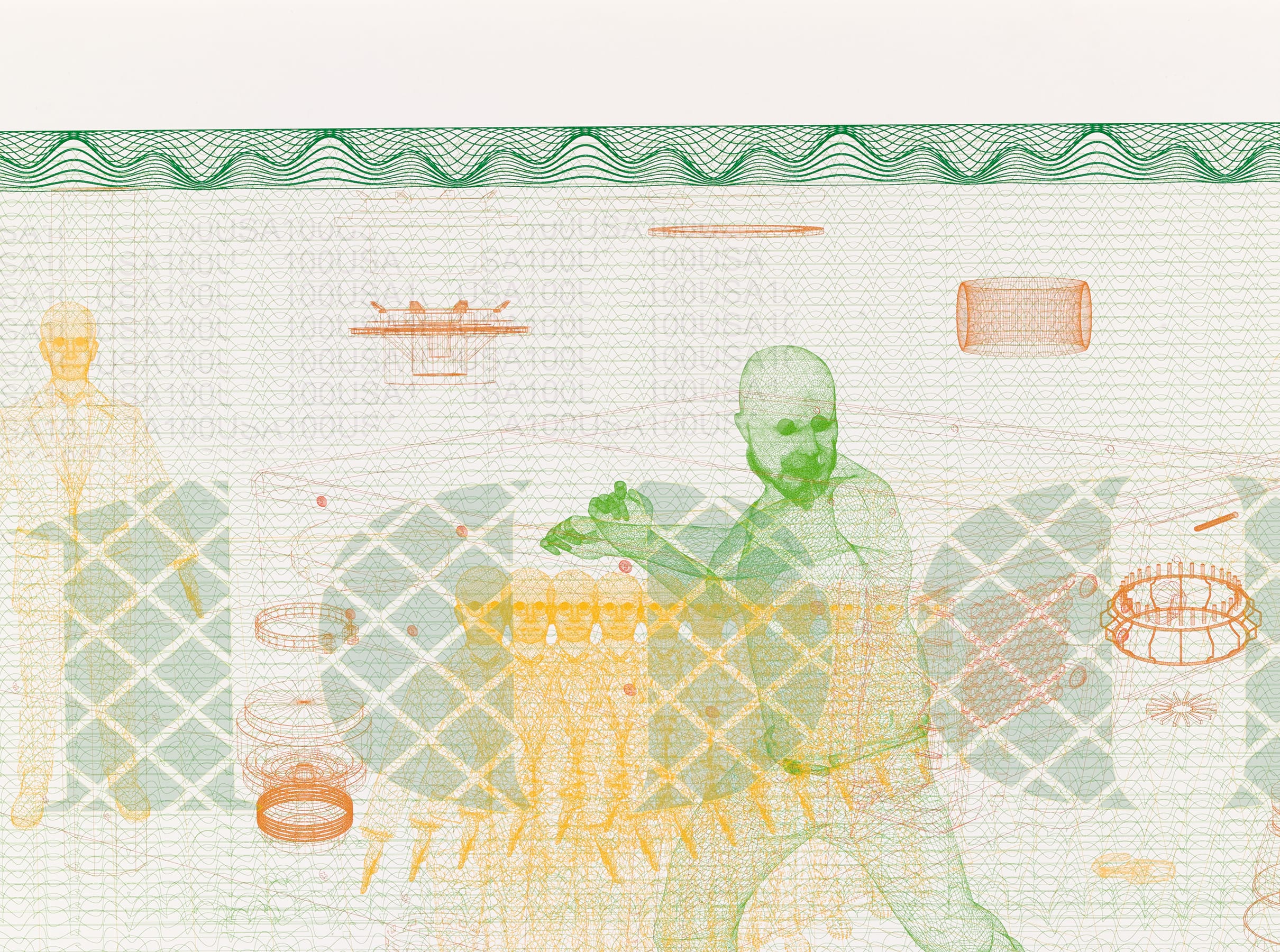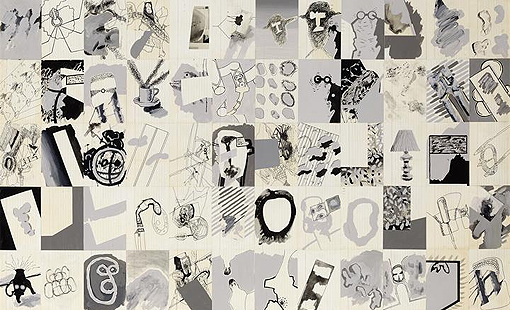
Highlights section updated with works by Joaquím Mir, Luis Gordillo and Teresa Lanceta
The Collection section of our website contains a subsection in which we regularly present works selected from the Banco de España's collection of over 4500 artworks covering a broad range of periods, styles and formats. The latest update to this subsection includes three works, all from the 20th century but covering a span of ninety-six years: the painting Sant Vicenç Cove (1903) by Joaquím Mir, the sketch Cards (1979) by Luis Gordillo and the tapestry Fabric (1999) by Teresa Lanceta. These works not only present moments of creativity which are highly representative of the artists in question but also reflect emerging trends in Spanish and international art in the periods in which they were produced.
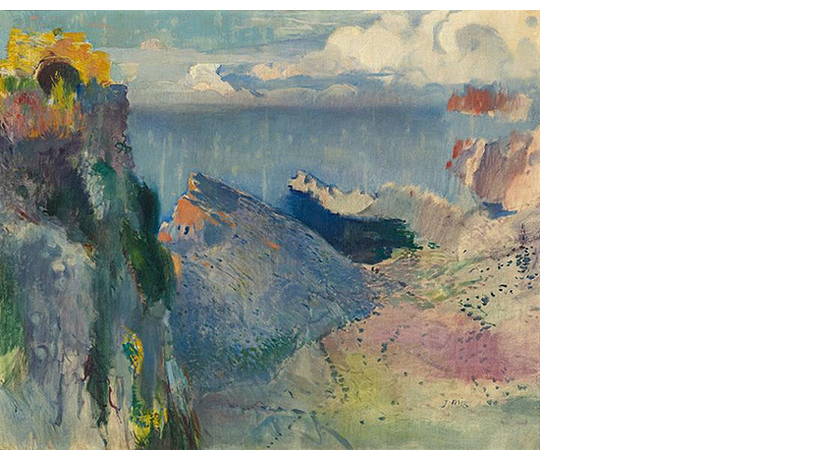 Joaquím Mir: Sant Vicenç Cove (1903)
Joaquím Mir: Sant Vicenç Cove (1903)
The oldest of the three is Sant Vicenç Cove (1903), a relatively small oil painting in which artist Joaquím Mir (b. Barcelona 1873 - d. Barcelona 1940), a master of Catalan modernist painting, displays his skill in depicting landscapes in a way that is both precise and unconfined. In the words of Julián Gállego Serrano, María José Alonso and Carlos Martín, in this work Mir focuses on 'trying out the composition of the work on the surface’ but does so without neglecting atmospheric values. This results in 'a garland of watercolour-like planes surrounding the bright blue of the sea with a high horizon reminiscent of the great curtains of perspectiveless colour used by Paul Gauguin'. Thus, without losing sight of the movement of lines typically found in late 19th century painting, Mir, who was painted several times by Picasso![]() , gives the Majorca landscape an almost immaterial quality and 'teeters on the brink of noucentisme', a movement which was then in its infancy but of which he was to become one of the leading exponents.
, gives the Majorca landscape an almost immaterial quality and 'teeters on the brink of noucentisme', a movement which was then in its infancy but of which he was to become one of the leading exponents.
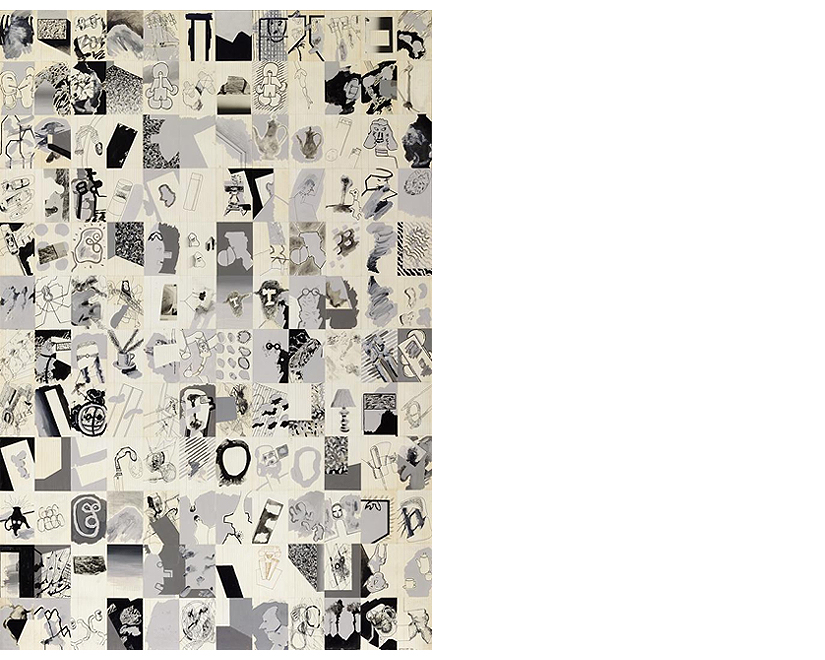 Luis Gordillo: Cards (1979)
Luis Gordillo: Cards (1979)
The second work selected is Cards (1979), an early example of the muting of colour in the visual art of Luis Gordillo (b. Seville, 1934) in the 1980s, a period when his characteristic biomorphic style was already fully defined. Andalusia-born Gordillo, who won the Velázquez Award in 2007, used disposable cardboard notepads as the backing for this work. Carlos Martín states that in its structure and concept this work recalls the post-abstract drawings of the 1960s which were such a paradigm shift in his painting. It is even more reminiscent of his works based on photographs, such as Charming Green Boy (1974), Oedipal Sequences (1976) and Soft Series A (1976), in both its iconographic and conceptual connections and in the similarity in size between these cards and the 15x10 cm format commonly used in domestic photos, which the artist uses as a collage or a starting point for heading off at other pictorial tangents.
Martín believes that, as in other works in which Gordillo uses grid-shaped compositions, Cards skilfully sums up the tension between the gestural and the geometric, between expansion and containment, between freedom and control, a theme that runs through his entire oeuvre. The work is marked by his wish to overrun the dialectic between the abstract and the figurative by creating a polyhedral visual shape in which, as in the other two works by the artist in our collection The Eclipse of Rita Hayworth (1987) and Interjections (1988)), biomorphism came increasingly to take centre stage from the 1980s onward, albeit with a hint of surrealism, as he sought a sort of rhizomatic organicity.
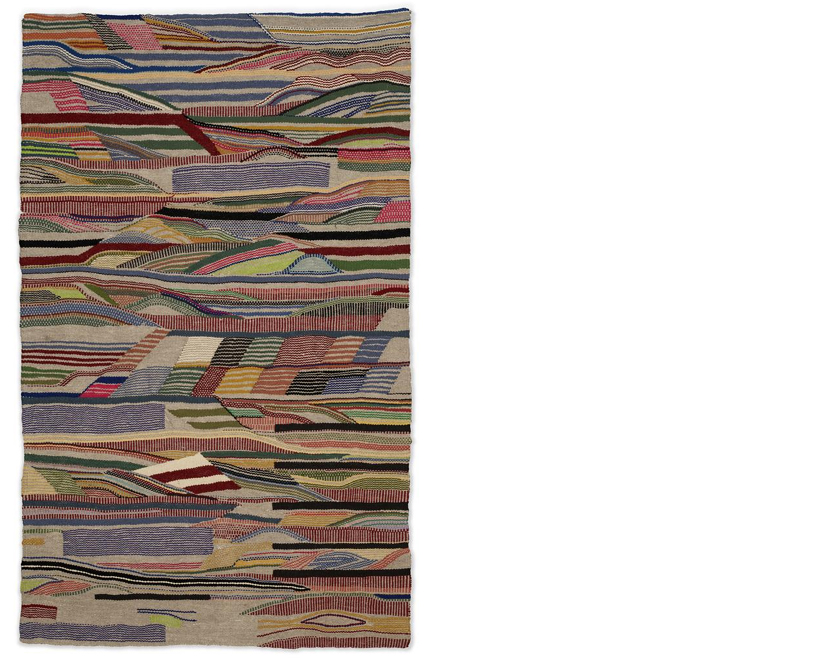 Teresa Lanceta: Fabric (1999)
Teresa Lanceta: Fabric (1999)
The most recent piece selected for this latest update of the Highlights section of the collection is Fabric (1999) by Teresa Lanceta (b. Barcelona, 1951), which forms part of her research project into and re-reading of the textile-making traditions of the weavers of Morocco's Middle Atlas region. This piece was shown at one of the exhibitions arising out of the project, Moroccan Fabrics![]() , staged at the Museo Nacional Centro de Arte Reina Sofía in 2000. This tapestry, notable for the absence of straight lines and the wide range of yarn colours used, is based on traditional motifs but does not follow any rhythmic pattern in its composition. Behind this 'celebration of discontinuity' lies the idea that the forms of craft-made objects cannot be dissociated from the conditions, experiences and production methods of the communities that make them. As Alejandro Simón notes, this is because their design is not pre-established but 'emerges as they are made'. It is the expression of a multitude of decisions made by weavers as they produce each object, reflecting the tensions and resistances that arise during the process. Lanceta thus uses her concept of weaving and her thoughts on the craft as a political act to highlight the need to understand tapestries as more than just decorative objects.
, staged at the Museo Nacional Centro de Arte Reina Sofía in 2000. This tapestry, notable for the absence of straight lines and the wide range of yarn colours used, is based on traditional motifs but does not follow any rhythmic pattern in its composition. Behind this 'celebration of discontinuity' lies the idea that the forms of craft-made objects cannot be dissociated from the conditions, experiences and production methods of the communities that make them. As Alejandro Simón notes, this is because their design is not pre-established but 'emerges as they are made'. It is the expression of a multitude of decisions made by weavers as they produce each object, reflecting the tensions and resistances that arise during the process. Lanceta thus uses her concept of weaving and her thoughts on the craft as a political act to highlight the need to understand tapestries as more than just decorative objects.
